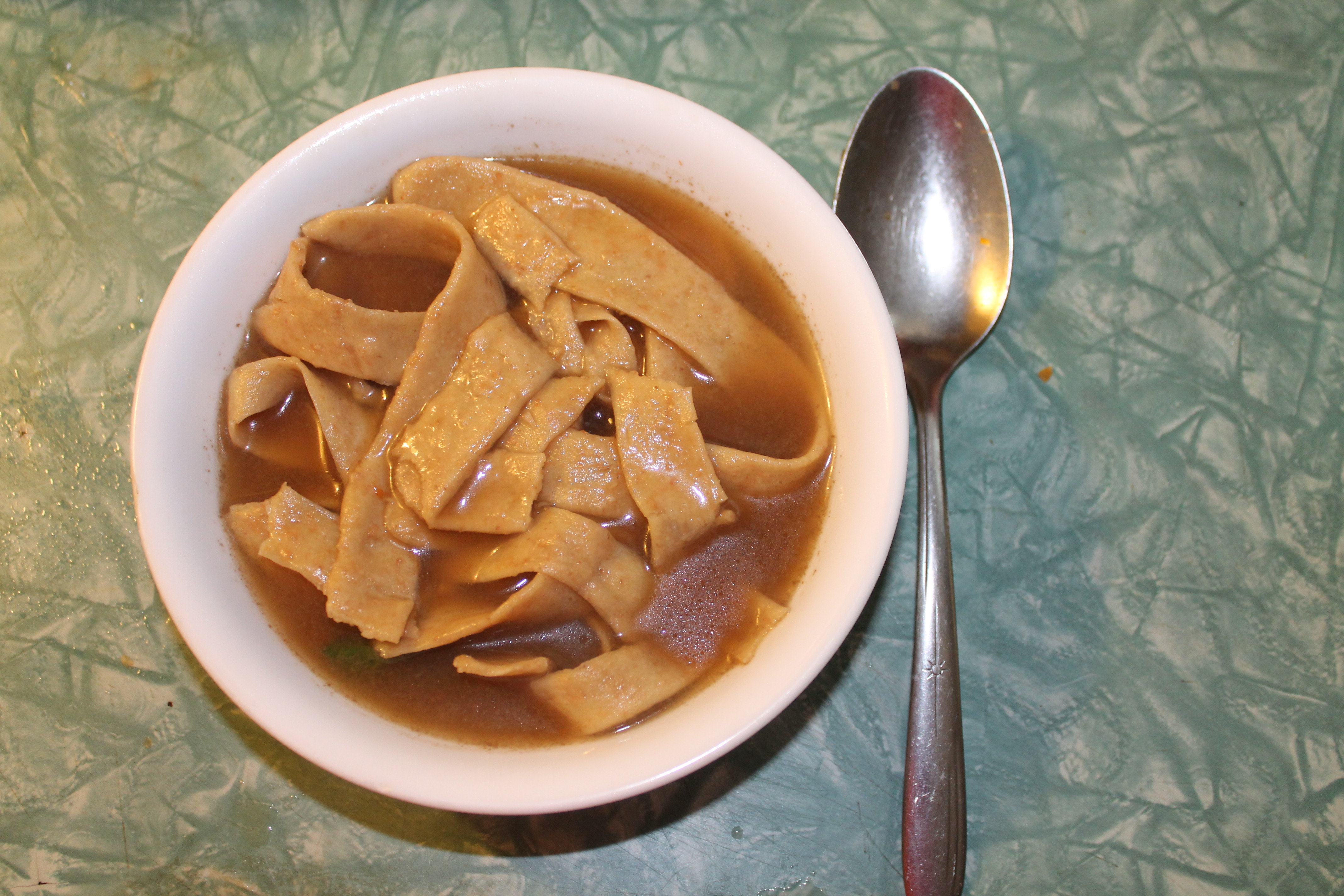
Made in Jiānádà: Lanzhou Lāmiàn (noodles!)
This is Part 1 in a series on Lanzhou noodles. Part 2 (the broth) is here.
This one has been a long time coming. Seriously. This dish is quite possibly the one thing we have eaten the most of in China. At 6rmb a bowl (like, 80 cents, maybe) and incredibly delicious, it’s hard to beat.
I was introduced to Lanzhou lāmiàn on my second day in the country, still jet lagged and wondering what the hell I had gotten myself into.
February in Shanghai, 2009; cold, grey, grim, absurdly smoggy, rainy.
I was flat hunting with Elaine, the admin assistant from my then new job, and I kept getting shown flats that were dishearteningly dreadful and embarrassingly over-priced (the laowai effect, I presume).
Elaine took me to lunch at a tiny Lanzhou noodle place just up the street from the flat I would eventually take (and then get booted out of 3 months later when the landlord suddenly decided he was itching to sell). She ordered me a bowl of piping hot 牛肉 拉面(niúròu lāmiàn), or beef pulled noodles.
The noodles were made right in front of us, the dough being stretched and folded and stretched until there were dozens of delicate cat’s cradle strands spread between the noodle maker’s outstretched arms. These were flung abruptly into a huge pot of hot broth to boil, reeking of cinnamon, garlic and star anise, then served quickly, without pretense.
She taught me that the little white ceramic tea pots contained black vinegar to be poured lightly into the broth, along with a spoonful or three of the ground up hot chilies in oil (sometimes mixed with sesame seeds).
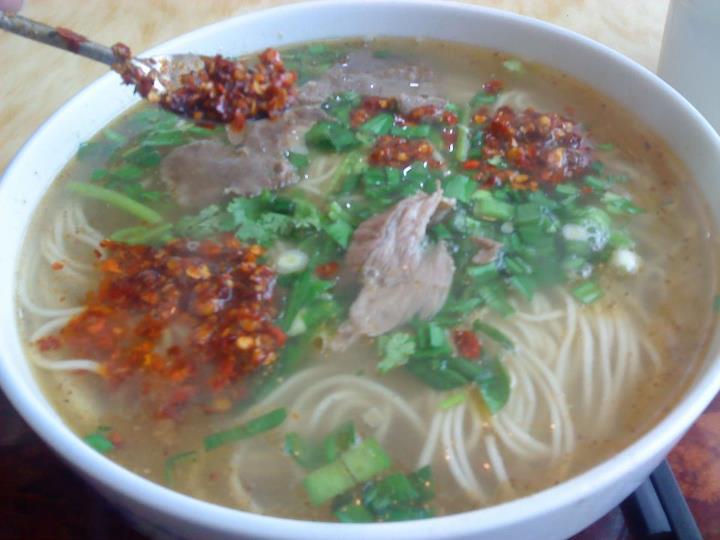
In the early days of my Shanghai blog, I blathered on at length about my love for pulled noodles. At one point I even made a meandering mobile phone video that started off in the now-gone noodle shop across the street from the university where I worked for 2 years.
When we first moved to Shanghai, Doug and I regularly had weekend breakfast noodles at the Lanzhou noodle place just up the street from our old flat. We still do. It’s also one of our too-tired-to-cook fallbacks.
When family and friends come to visit, I take them there too.
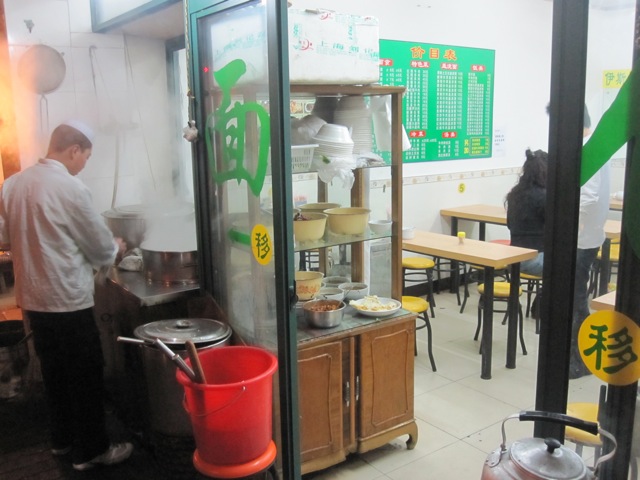
Now, given that a freshly pulled bowl of noodles, home made broth, thin slivers of beef and a sprinkling of cilantro and scallions comes to less than a dollar, there’s really no good reason to try to make it when I’m in Shanghai.
Here is another matter.
Even in Chinatown, here in Victoria, it’s not unusual to be expected to pay the ungodly sum of, say, $8 for basic chǎomiàn. Not 80 cents, no!
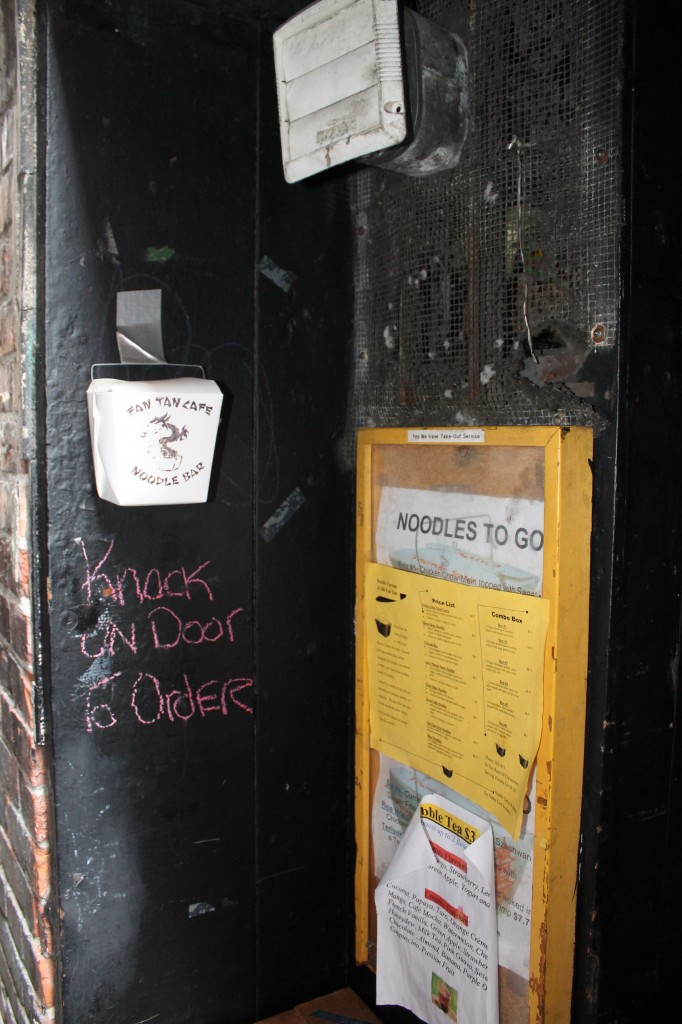
So I made my own.
What we have here is what I was able to do with 牛肉拉面– pulled noodles in a fragrant beef broth. I made a few small changes based on availability of ingredients, personal preferences, and my complete inability to pull noodles like the Lanzhou dudes can. They have some mad skills, I tell you.
I made a modified version of the noodles found in Naomi Duguid’s Beyond the Great Wall cookbook (and also available from other folks online here and here ). Hers are Kazakh noodles, which are pulled…in a flatter, wider, easier way. The texture reminds me of dāoxiāomiàn (刀削面) which are thicker, chewier noodles that are sliced from a big brick of dough directly into the boiling broth.
They’re pretty amazing.
For simplicity, I’m breaking this recipe up into two posts: the noodles and the broth. They can be made together or separately. You can eat the noodles with just some sesame oil and a sprinkle of red pepper flakes and be quite happy. The broth can be sipped alone on a cold winter day, with a burble of black vinegar and some chili paste. Both are quite therapeutic, to be honest.
And not just because I used nearly 2 heads of garlic in the broth…
The Noodles
They’re nearly the same as my Xinjiang lady noodles, but with 2 eggs thrown in. Flour to water ratio is slightly different too.
- 3.5 cups of flour (I used equal parts All Purpose, whole wheat and spelt flours)
- 3/4-1 cup of lukewarm water (I used closer to a cup due to the whole wheat and spelt flours needing more)
- 2 eggs
- 1 tsp salt
All the dry stuff goes into a mixing bowl. Give it a swirl with your fingers to make sure nothing is clumped.
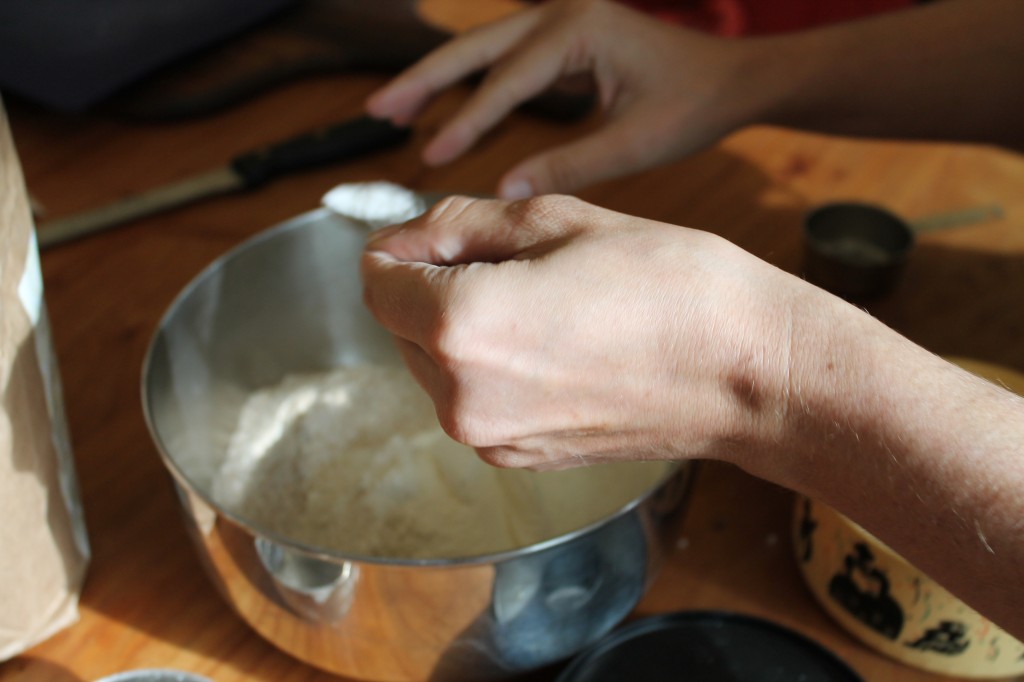
Pour in the water.
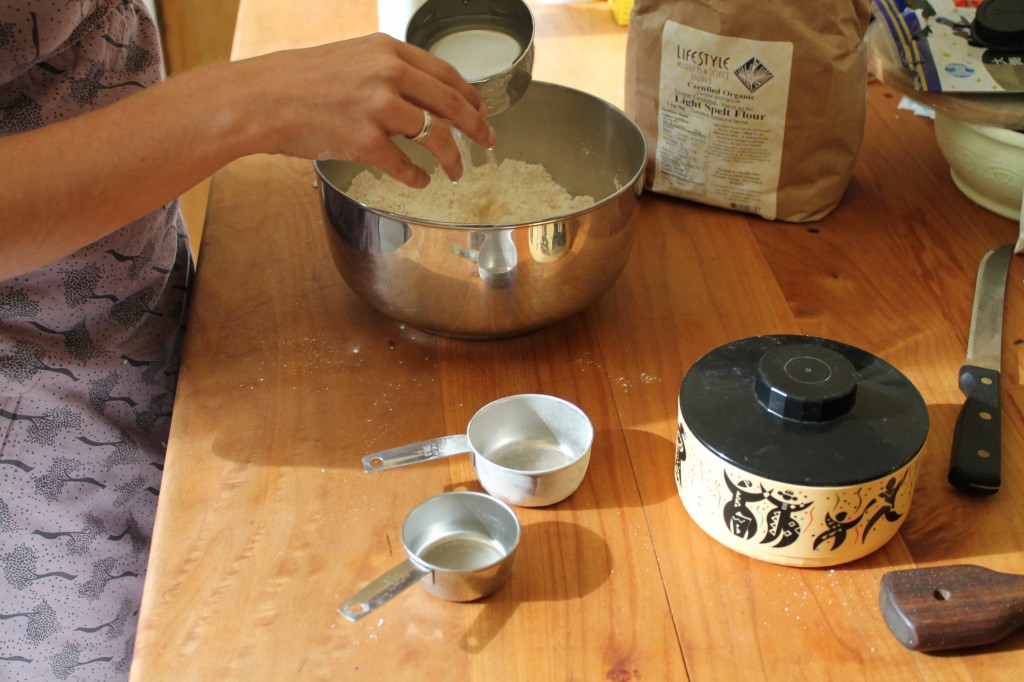
Crack in the eggs.
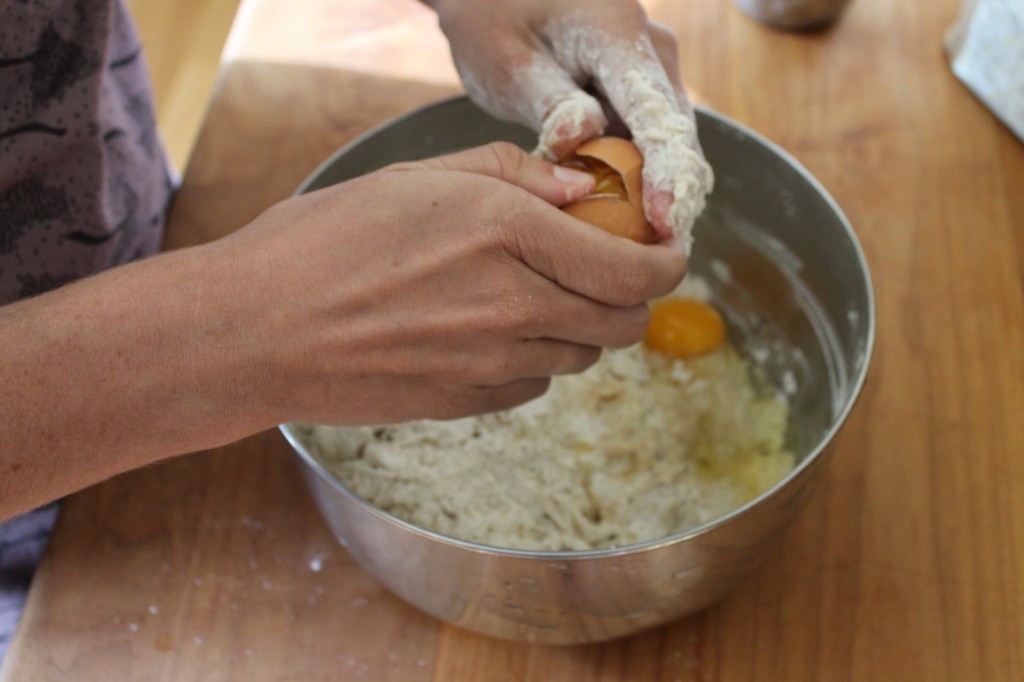
Start mixing the flour, water and egg together. Really get in there with your fingers, scraping any dry bits off the walls of the bowl, bringing all the wet and dry bits together.
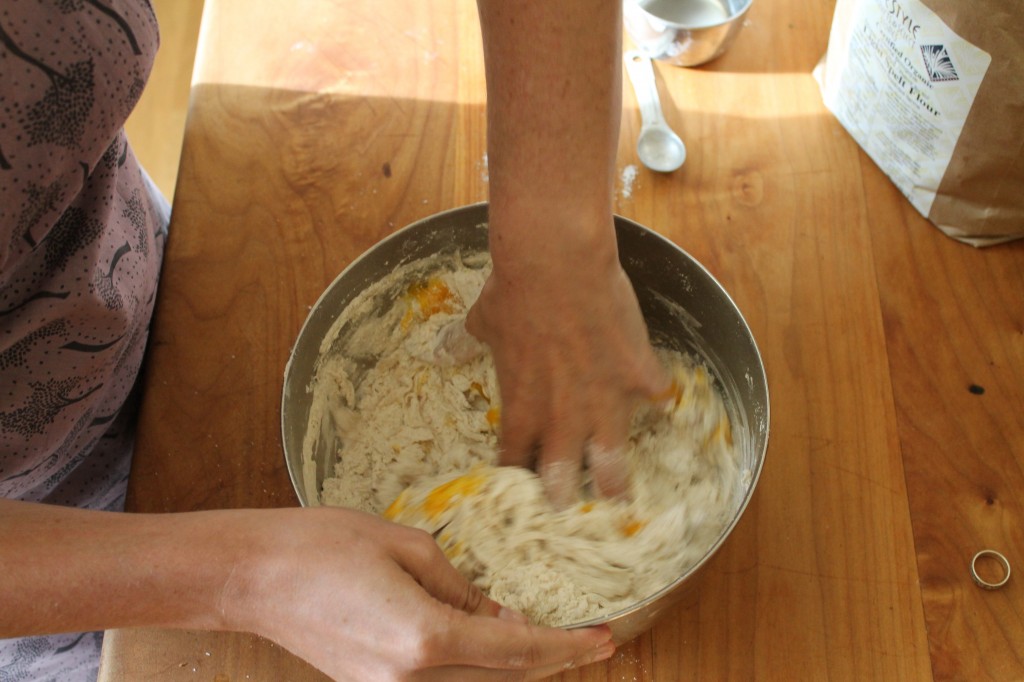
Tip it out onto a clean, dry countertop. I must say, I love having more than one square foot of usable counter space.
Start to bring all the dry bits back toward the center to form a dough ball. Incorporate!
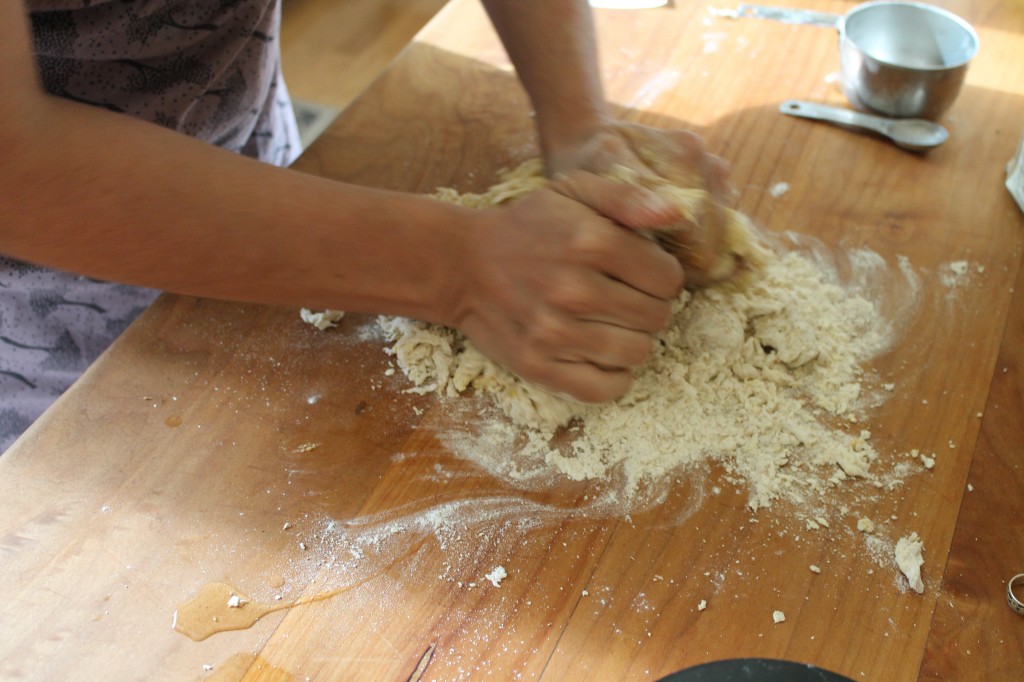
And when the dough ball starts to take shape, start kneading.
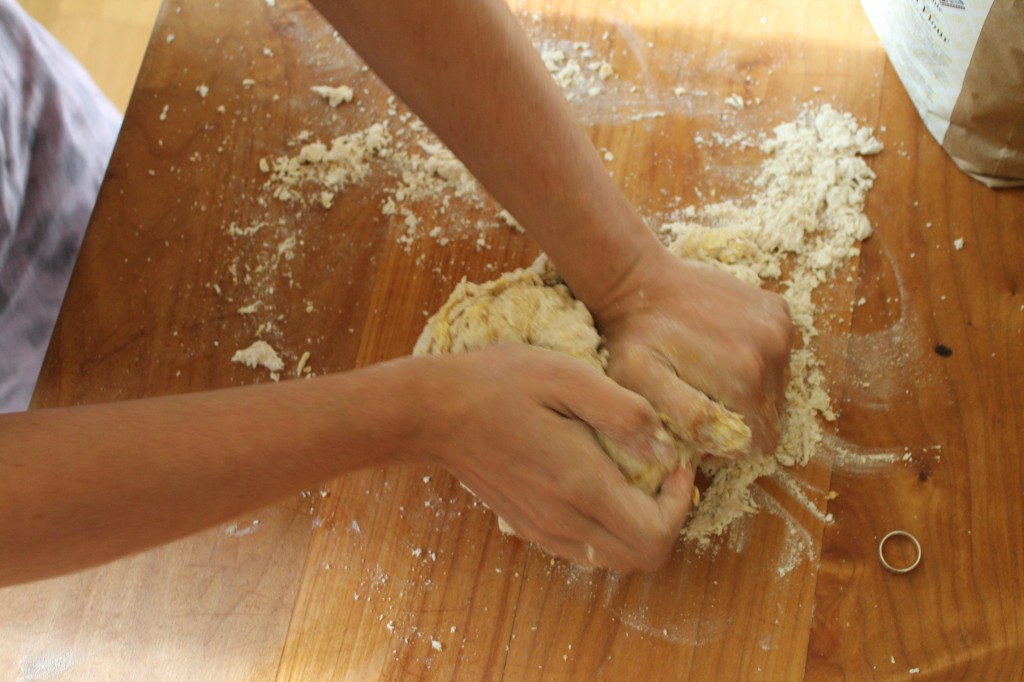
Because I used 2/3 non-All Purpose flour, mine is a bit heavier, drier and needs a bit more work to get it to the desired baby-bottom consistency.
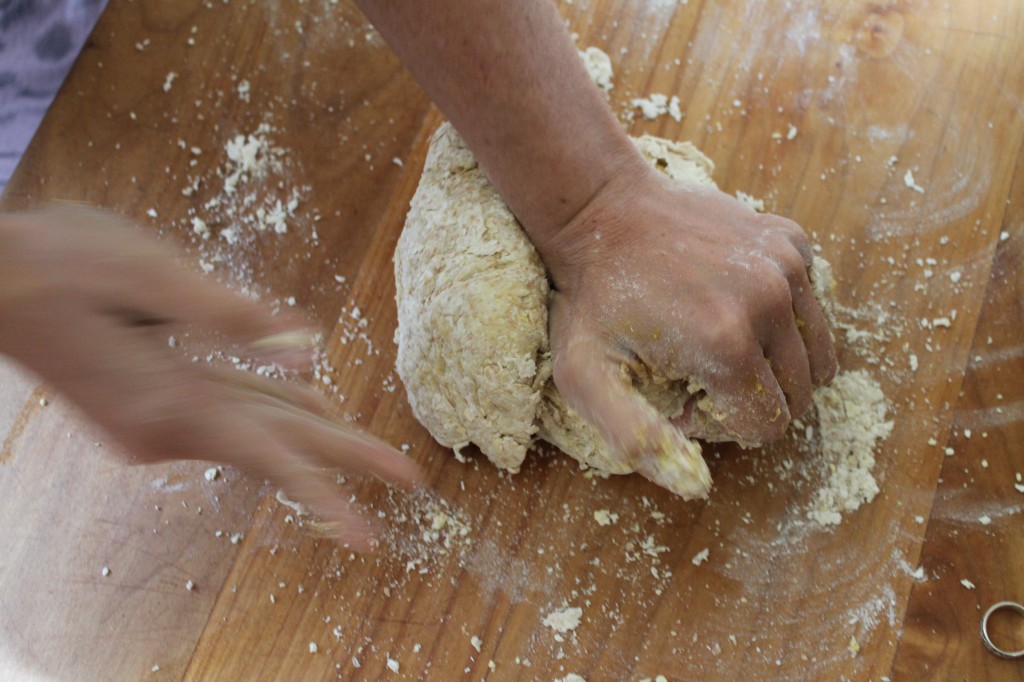
Start to shape it into a ball as you knead it, pushing in from the outside.
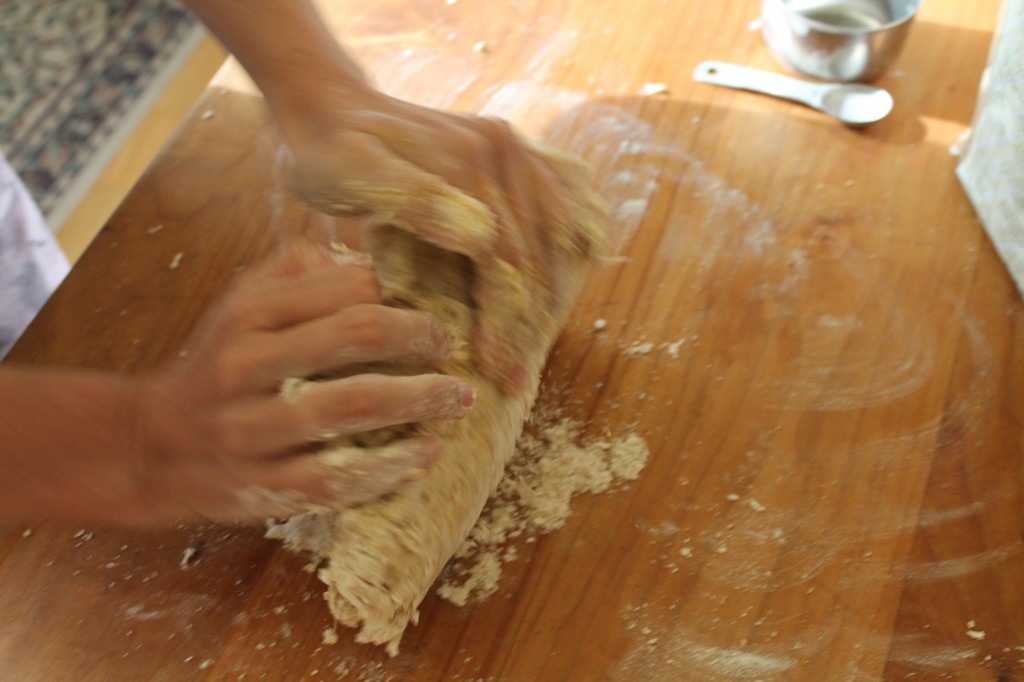
And after some time, maybe 5 minutes, it all starts to come together.
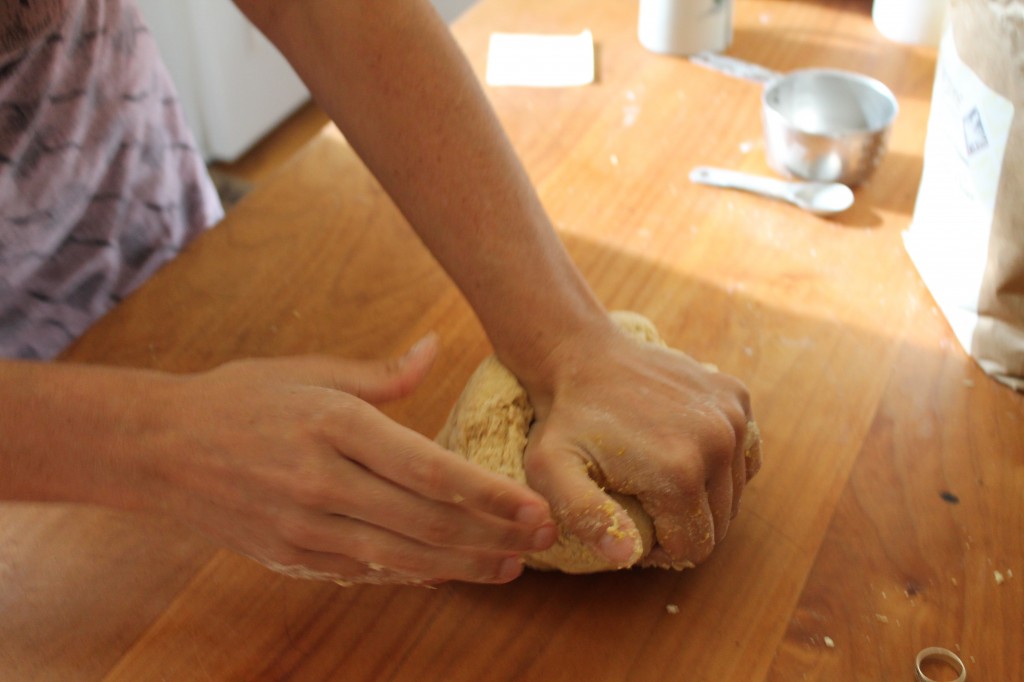
Smoothing out the edges, picking up the stray bits of flour around it like a sticky doughy Hoover.
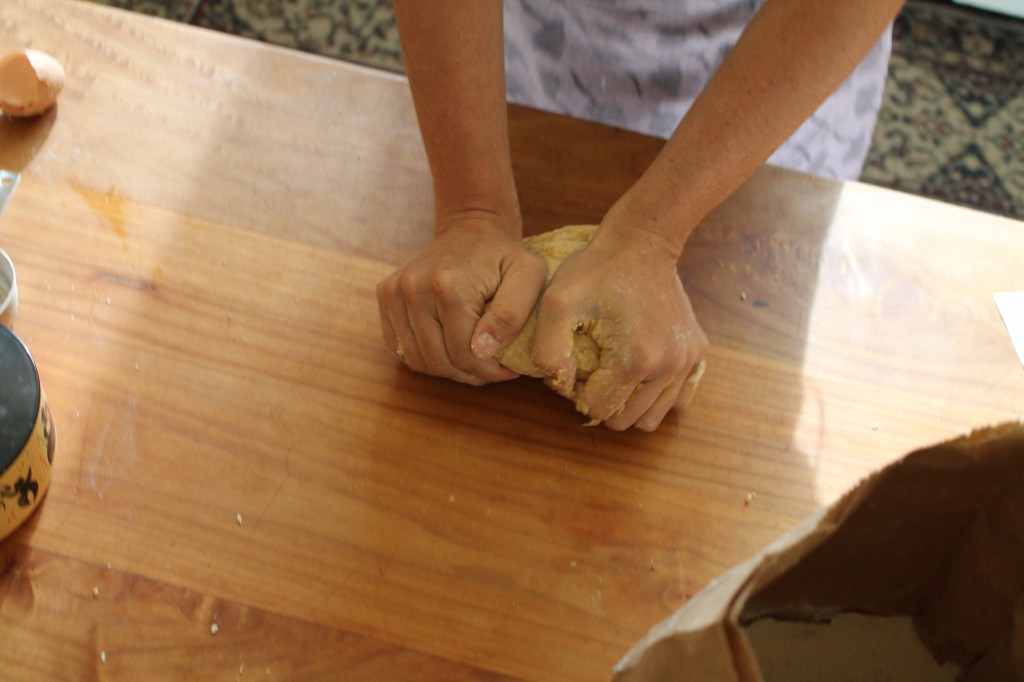
In Shanghai, I normally wrap my dough balls in a clean moist cloth that I reserve for such occasions. However, there were no appropriate ones at hand so I used parchment paper.
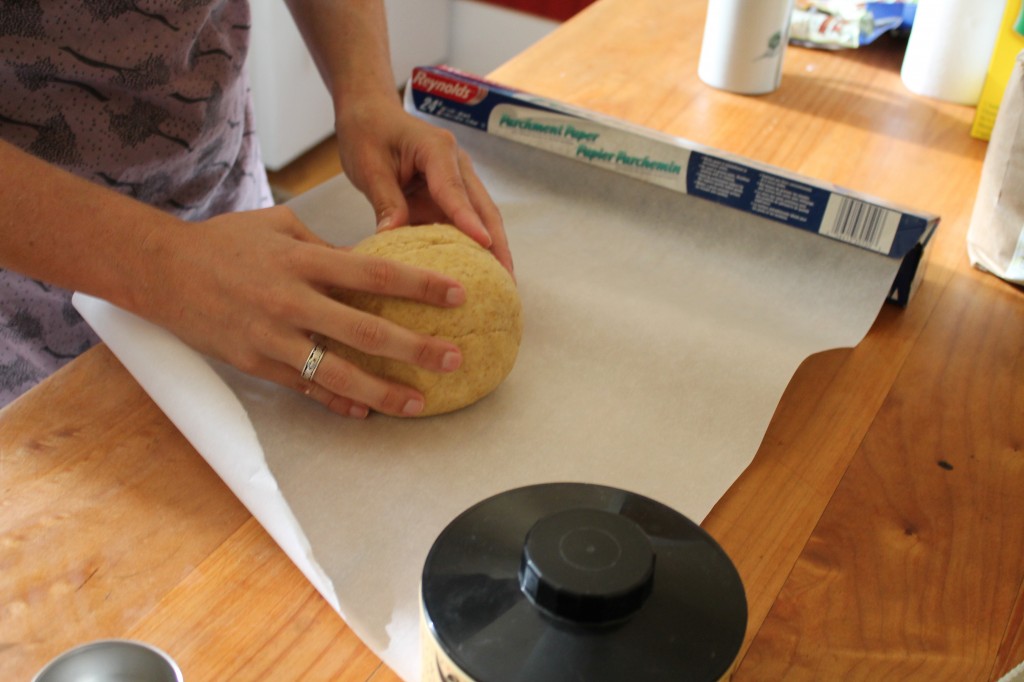
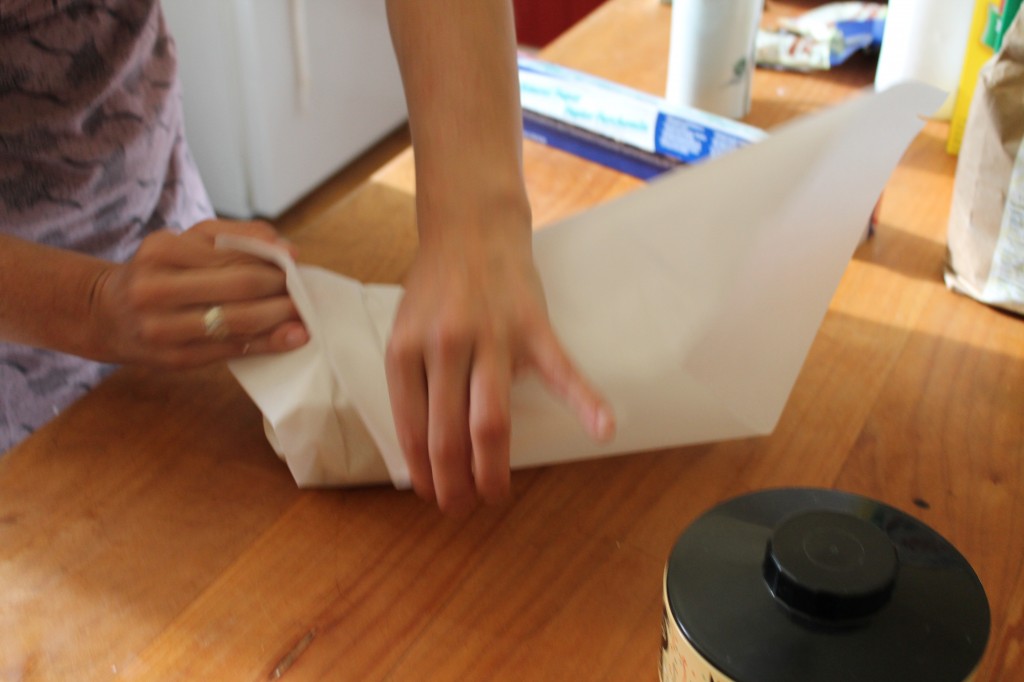
Let it rest at least an hour. I put mine in the fridge for the afternoon.
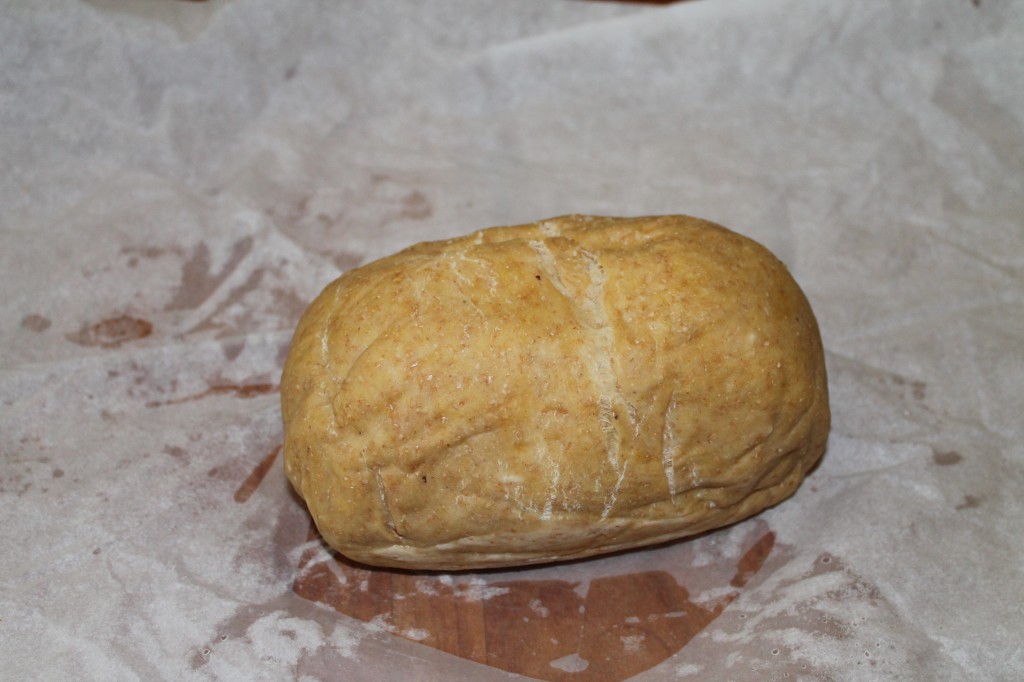
Divide the dough into 4 pieces. One piece makes enough for 3 small servings.
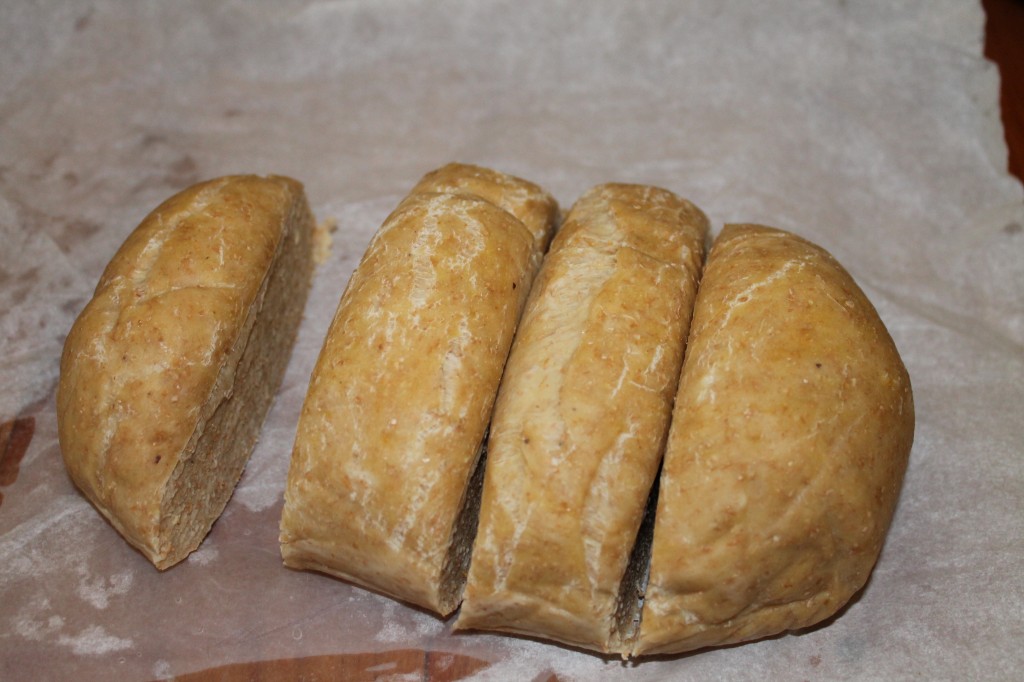
You can use a rolling pin here, but it isn’t really necessary.
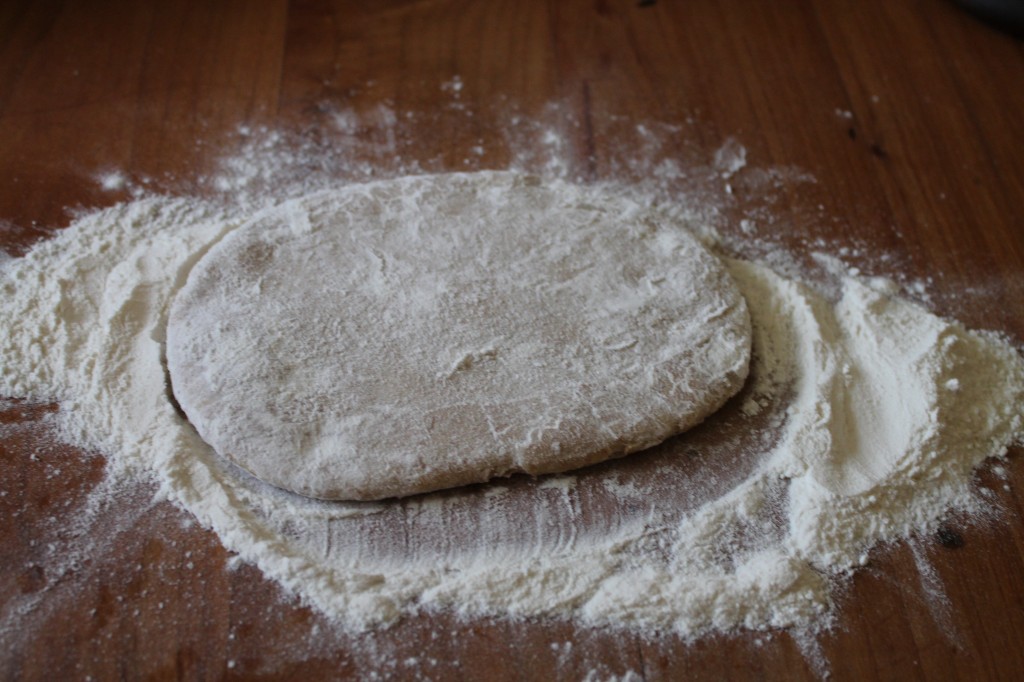
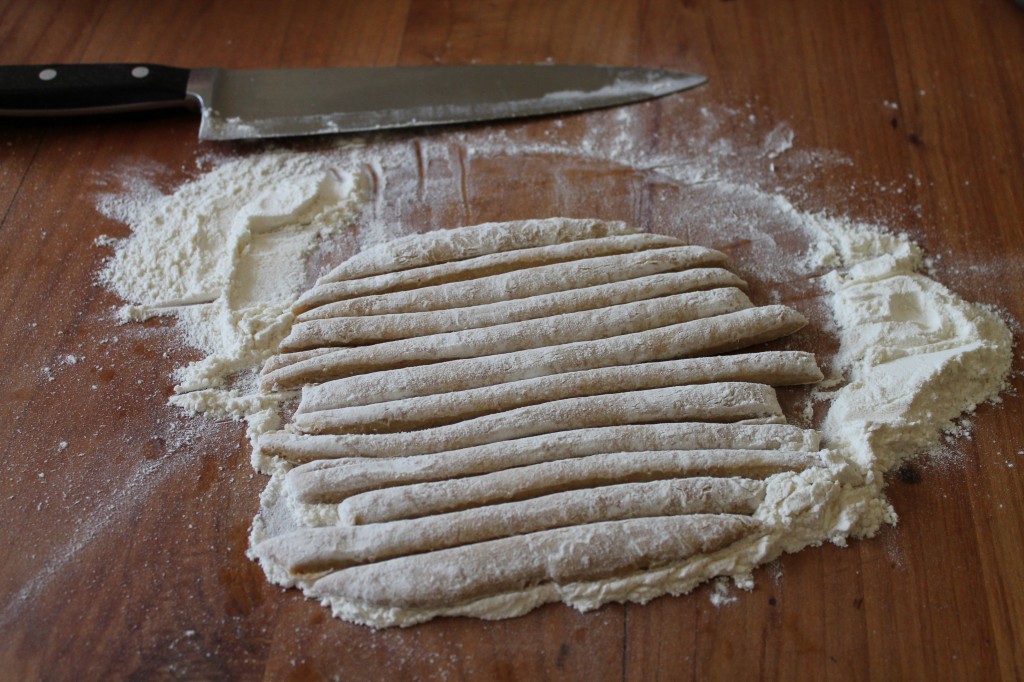
To pull the noodles, hold the dough strips between thumb and index finger in both hands and work your way along the length of the dough, flattening and pulling as you go. Press and pull.
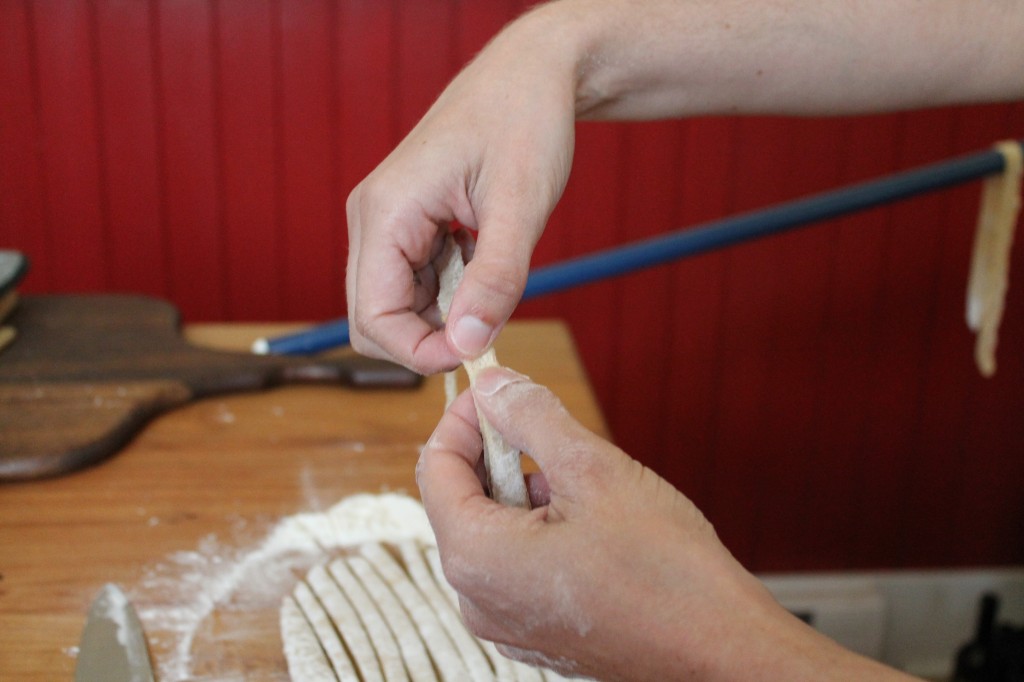
You can cook them immediately or drape them over a very convenient mop handle to dry slightly for future use. Drier noodles take a bit longer to cook.
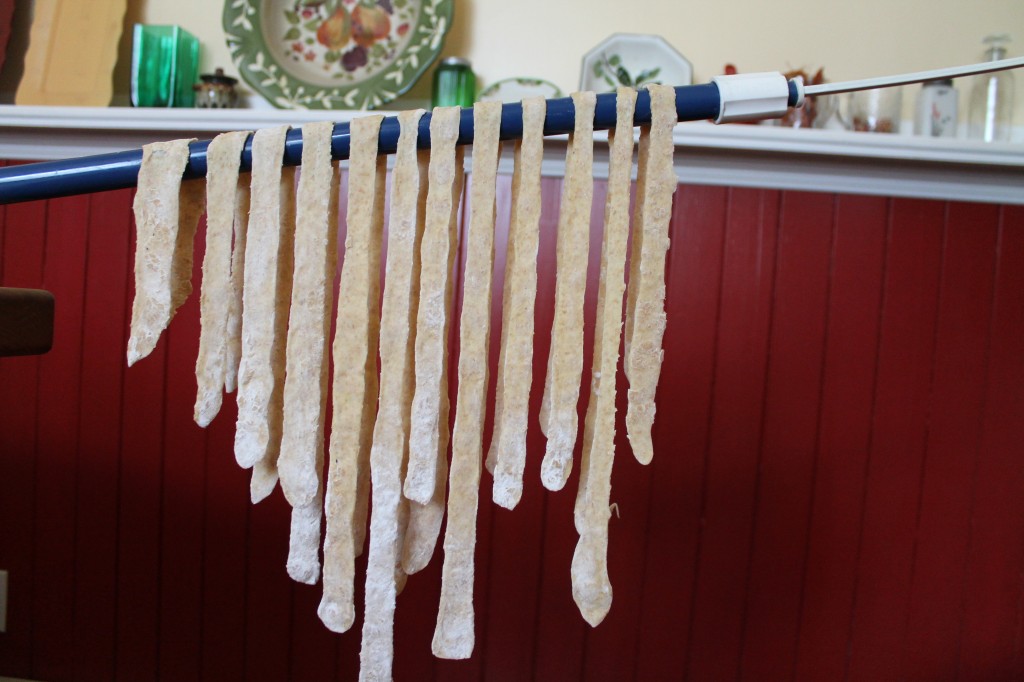
Cooking
To cook, I used the broth I’d been simmering. Water should also be fine, lightly salted. The noodles had been hanging on the mop handle all afternoon and took just over 3 minutes to cook. You might want to do a little test run to see how long yours need before you cook up a big batch.
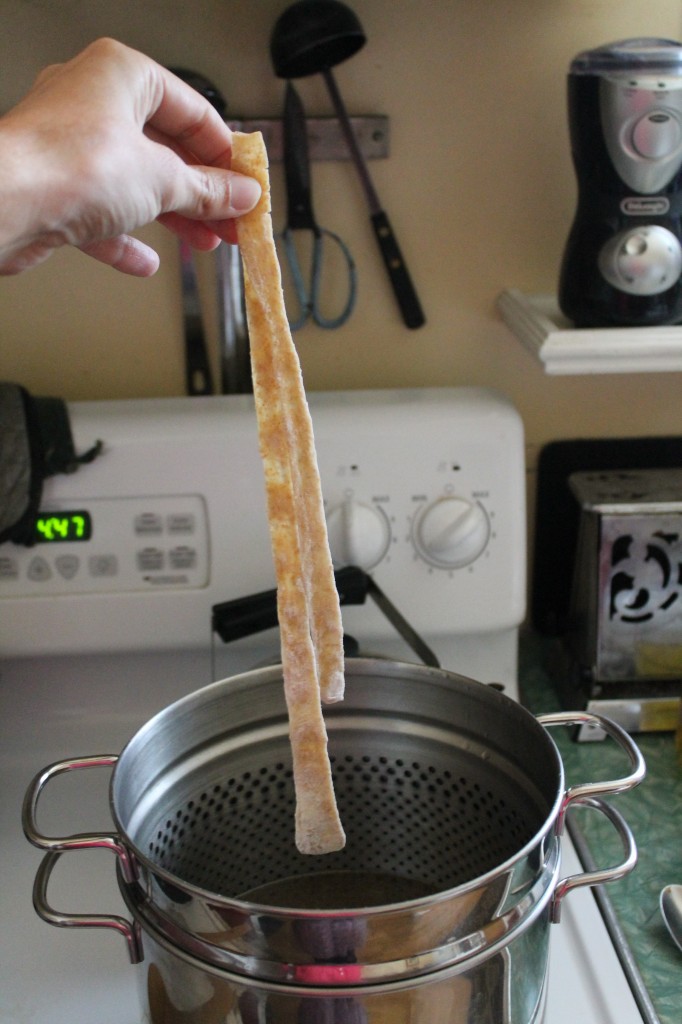
The finished noodles.
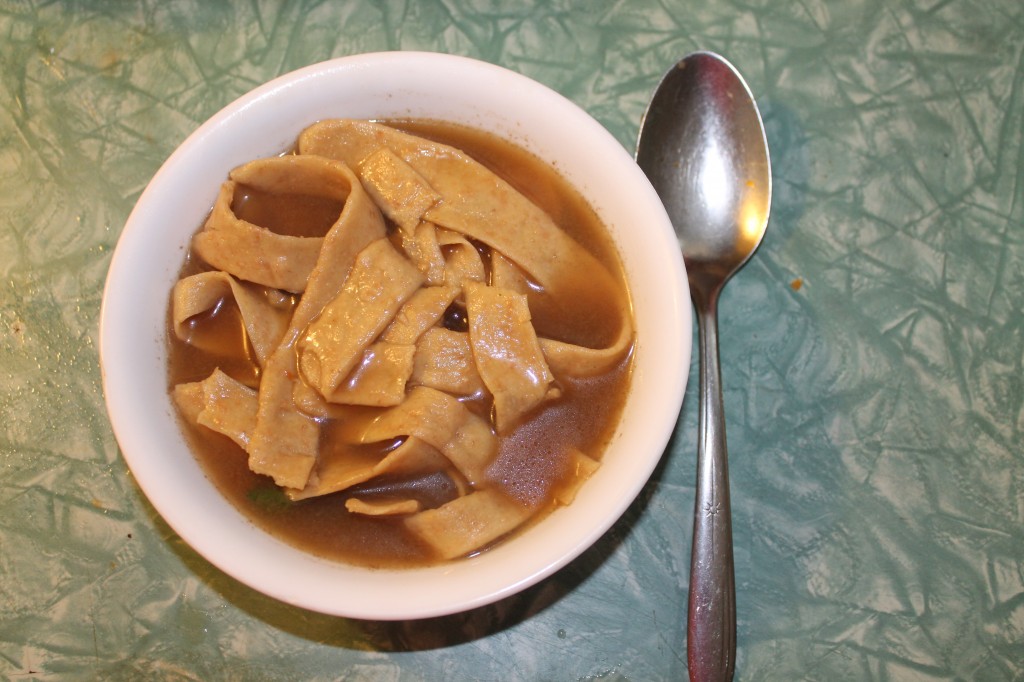
You May Also Like

Welsh Rarebit à la Chinoise
September 7, 2011
A Tale of Two Tortillas
September 21, 2011


7 Comments
Selly
Stop making me hungry!!! 🙂 I’m so cooking these tomorrow, I have time in-between studies so I’m going to put that free time to good use!
MaryAnne
It’s my job to torture you with delicious yet just out of reach delicacies…
Rory Alexander
A Lanzhou lāmiàn restaurant on our street was where I had my first meal in China and we ate there all the time as it was often open late at night when we finished teaching and all the Chinese canteens were closed.
I do miss it and will have to give your recipe a try.
Rory Alexander recently posted..A face for Facebook
MaryAnne
You should give it a shot- it’s really easy and the smells bring back memories of so many bowls of 6 kuai lamian at odd hours…
mjskit
I’ve seen shows with they feature a pulled noodled dish and show the pulling process. It pretty amazing! You make it look so easy, a lot easier than I thought it would be. Great looking bowl of noodles. Now I need to check out the broth.
mjskit recently posted..Apricot Jam – When One Jar is All You Need
MaryAnne
The real-deal noodles are long and thin, like spaghetti strands. I can’t for the life of myself figure out how they do it! I figure this version will suffice as it’s technically stretched by hand…
TracyAnn0312
I think that even if the noodle is quite perfect than the spaghetti strand at least you try your best in order to make your own style. I can’t wait to make it too.
TracyAnn0312 recently posted..ערבות